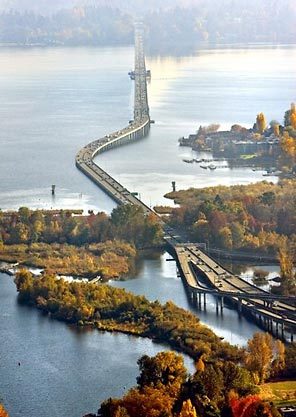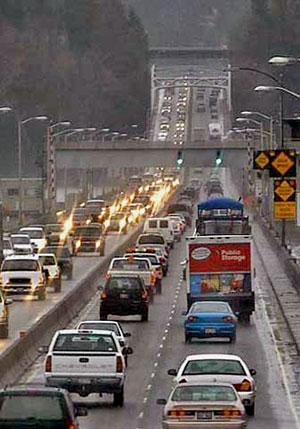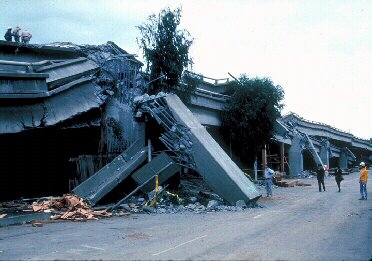Part V: The Imbalance of Roads and Transit By Michael Ennis, Director, Center for Transportation Policy This is the fifth chapter in an ongoing series of analysis on the RTID/ST2 ballot measure. The previous installments include: Part I: The Cost of Sound Transit, Part II: Your Transportation Tax Burden, Part III: Cost Exceeds Benefits in Sound Transit's Light Rail Expansion, and Part IV: Light Rail and Interstate 90. Summary Introduction Today, population increases have led to higher demand on the region's road system and, because policymakers have shifted spending away from increasing road supply, traffic congestion is expected to double or triple in the next twenty years. Leaders have tried to respond to the growing congestion by funding more than 400 road projects with two recent gas tax increases, worth about $10.5 billion,[1] and a $15 billion expansion of the public transportation system with the first phase of Sound Transit in 1996.[2] This November, voters in Pierce, King and Snohomish counties will decide on a $47 billion transportation package, commonly known as "roads and transit." The measure combines Sound Transit's second phase (ST2), which includes additional spending on light rail, commuter rail and buses, and the Regional Transportation Investment District (RTID), which includes general road improvements. The legislature combined the two packages in order to gain support from two competing philosophies in transportation policy, roads and transit. Essentially, those who support roads over transit would vote to pass the combined package because of the RTID projects. And public transportation advocates would back the measure because of ST2. This compromise however, assumes both sides are balanced, with identical spending amounts. Certainly the name, "roads and transit," suggest the two sides are equal. Yet, examining the two plans shows their sums are unbalanced and reinforces the message from some regional leaders of favoring transit over roads. Spending Favors Transit Over Roads The total price tag of the ST2/RTID package can be illustrated in a variety of ways. Sound Transit, for example, advertises just the ST2 proposal as $10.8 billion.[3] But this figure does not account for inflation or the costs of bonding. Accounting for both variables through 2027, places the cost of projects for ST2 at about $23.6 billion. Figuring through 2057, which is the estimated time all ST2 projects will be paid for, places the total cost of ST2 at $30.9 billion. Other estimates focus on revenue and calculate ST2 costs at $141 billion through 2057.[4] The following table compares the different types of cost estimates of ST2 and the RTID and shows the spending distribution between roads and transit. In every measure, transit spending represents nearly two-thirds of the total package. In addition, the RTID contains about $451 million in transit related spending and the sales taxes for both Sound Transit phase 1 (ST1) and ST2 do not expire. [5] The RTID tax increases do expire once the projects are completed and the debt interest is paid. In other words, the roads and transit plan is not balanced and favors public transportation by 3 to 1. The Inefficiency of Sound Transit Weighing Sound Transit's cost and benefits shows that its ST2 proposal is extremely inefficient when compared to other public transportation alternatives. For example, King County recently began to expand its bus service through a successful ballot measure called Transit Now. King County officials estimate Transit Now will add up to 60,000 new daily riders and 175 new buses to the county's transit system.[6] Adjusting for inflation, the cost of Transit Now in 2030 will be about $140 million per year. This means the total cost for King County to move one rider to its system would be about $2,333 per person. Sound Transit estimates its total system ridership for ST2 would be 168,000 riders by 2030.[7] Sound Transit also estimates that the cost of ST2 in 2030 would be about $23 billion. This means the total cost for Sound Transit to move one rider to its system would be about $136,904 per person. The following table compares the cost and ridership benefits of the ST2 proposal with Transit Now. To put this in perspective, the region could purchase the equivalent of 164 Transit Now packages for the same cost as ST2. This new service would have an estimated ridership of more than 9.8 million daily riders and add 28,700 new buses. Washington only has a population of about 6.4 million people and adding more than 28,000 buses to the tri-county region would be unrealistic. But this comparison illustrates how expensive and inefficient Sound Transit's plan is. ST Express Bus Service Plan is also Flawed Sound Transit plans to spend an additional $328 million for its ST Express bus service in the ST2 proposal. The package would add new park-and-ride stalls, transit centers and up to 96,000 additional bus service hours.[8] Yet Sound Transit says ridership on its Express bus system, after a temporary increase, will actually fall if ST2 passes. Sound Transit calculates that if ST2 does not pass ridership on its ST Express bus system would be about 51,000 in 2030.[9] If ST2 passes, Sound Transit estimates ridership would continue its average climb but then drop to about 33,000 riders per day, by 2030.[10] This means ST2 will actually reduce demand on its bus system by 35% in 2030. In fact, if ST2 passes, ridership on the ST Express system will be 12% less than it is today.[11] This decrease in demand is logical considering that both ST1 and ST2 light rail lines once finished will compete against Sound Transit's own bus service. This means the same public agency would be spending money to compete against itself. Yet, the ST2 plan proposes a $328 million increase in spending with an additional 96,000 hours of bus service, rather than asking for reductions that are commensurate with the lower demand. Conclusion State leaders tried to find compromise in the political debate between roads and transit with a combined measure, but RTID and Sound Transit officials did not deliver the balanced conciliation state policymakers were hoping for. With disproportional spending and the fact that Sound Transit taxes never end, the proposed plan clearly demonstrates a preference towards public transportation. Ironically, Sound Transit and RTID officials strengthened the very division state leaders were trying to solve and, as a result, no matter what voters decide, traffic congestion will continue to worsen. Michael Ennis [1] http://wsdotblog.blogspot.com/2007/05/project-delivery-how-are-we-doing.html [2] Sound Transit, University Link Financial Plan, June 2006. [3] http://www.soundtransit.org/Documents/pdf/st2/Freedom_to_Move_trifold.pdf [4] http://archives.seattletimes.nwsource.com/cgi-bin/texis.cgi/web/vortex/display?slug=rtid16&date=20070816&query=don%27t+believe+the+hype [5] http://www.rtid.org/docs/FINAL_RTIDBlueprint.pdf [6] http://www.washingtonpolicy.org/Transportation/PB_EnnisTransitNow.htm [7] http://www.soundtransit.org/Documents/pdf/st2/Freedom_to_Move_trifold.pdf [8] http://www.soundtransit.org/Documents/pdf/st2/ST2Plan_08_07.pdf [9] http://www.soundtransit.org/Documents/pdf/st2/Freedom_to_Move_trifold.pdf [10] Ibid. [11] The most recent ridership report from Sound Transit shows that average ridership for the ST Express bus system is about 37,588 riders per day. This report can be found here: http://www.soundtransit.org/Documents/pdf/newsroom/Ridership_Q2_2007.pdf
2007-17
The phrase,'Unsound Transit', was coined by the Wall Street Journal to describe Seattle where,"Light Rail Madness eats billions that could otherwise be devoted to truly efficient transportation technologies." The Puget Sound's traffic congestion is a growing cancer on the region's prosperity. This website, captures news and expert opinion about ways to address the crisis. This is not a blog, but a knowledge base, which collects the best articles and presents them in a searchable format. My goal is to arm residents with knowledge so they can champion fact-based, rather than emotional, solutions.
Transportation
Wednesday, October 10, 2007
Too Much Light Rail, Too Little Roads in Prop 1
Labels:
0.21 Prop 1,
1.1 Sound Transit,
1.33 RTID,
2.11 Seattle LR,
Mike Ennis,
ST2
The articles are posted solely for educational purposes to raise awareness of transportation issues. I claim no authorship, nor do I profit from this website. Where known, all original authors and/or source publisher have been noted in the post. As this is a knowledge base, rather than a blog, I have reproduced the articles in full to allow for complete reader understanding and allow for comprehensive text searching...see custom google search engine at the top of the page. If you have concerns about the inclusion of a specific article, please email bbdc1@live.com. for a speedy resolution.









